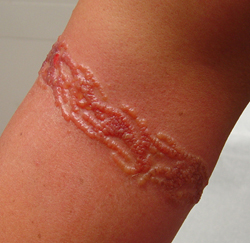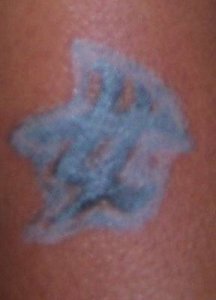- Tattoo Removal in Winter
Factoid – Statistics show that more people begin a tattoo removal in spring and summer than fall or winter. That’s like always eating immediately after brushing your teeth, it’s backwards.
Cool weather tattoo removal is more comfortable and the treated area is more likely to be covered so no one can see the removal of a tattoo underneath all those warm clothes. That gives the added advantage of not exposing the treated area to UV radiation from the sun, which is prudent no matter what tattoo remover you happen to be using. Any tattoo removal product that actually works, (and there are plenty that don’t – usually creams), will interfere with skin pigment formation and make the treated area more susceptible to the harmful effects of UV radiation on the treated area. In many cases this can lead to hyperpigmentation or a darkening of the treated area relative to the surrounding skin.
Removing a tattoo in hot weather is more uncomfortable because with each treatment there must be a healing period which can include peeling of the skin which can cause itching. Hot, itchy, sweaty skin can drive a person nuts. An itch preventative can be applied, but the sweat will make the application difficult and shorten the duration of the effectiveness because it will be diluted with salty sweat.
In cooler weather the non itch medication will stay in place and provide much more relief.
Chafing is another problem in hot weather. If the removal location is in an area prone to chafe it just adds to the discomfort. A protective bandage can be used to prevent chafing in fall or winter, but in summer bandages are more likely to become unstuck and expose the area to chafing.
When considering the removal of a tattoo, common sense is a very important factor to achieving an effective and comfortable tattoo removal treatment. Do your homework. Choose your product and start the treatment when the weather begins to cool and your tattoo removal experience will have a higher chance of success because you will experience less discomfort, and believe me, any tattoo removal product that works comes with some discomfort.
Any tattoo removal product or method that promises an easy treatment with no discomfort is selling you a load of you know what. Think about it – how is it possible to remove tattoo pigment embedded in the dermis (second layer of skin) without experiencing any discomfort? As they say, if it sounds to good to be true it probably isn’t. They might as well be trying to sell you land for $1 an acre 100 miles south of New Orleans. The land is there, they just neglect to tell you it’s 200 feet beneath the Gulf of Mexico.
To modify an old saying: Beware of strangers selling tattoo removal creams – you’re about to be screwed.
*********




